#Tsimshian
Text
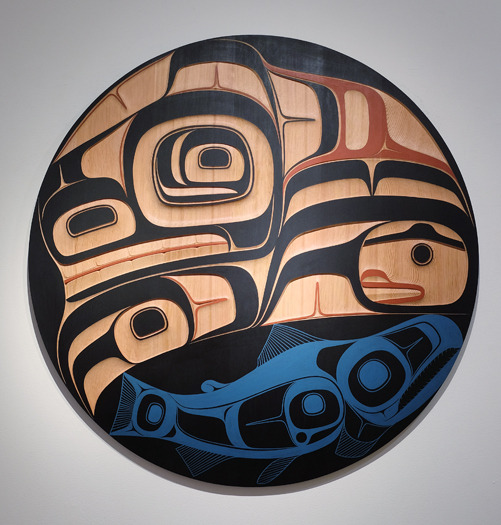
Patient Fisherman
Phil Gray
35 notes
·
View notes
Text
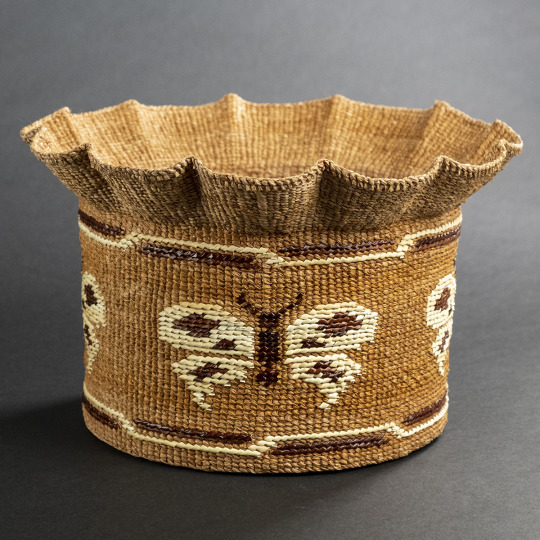
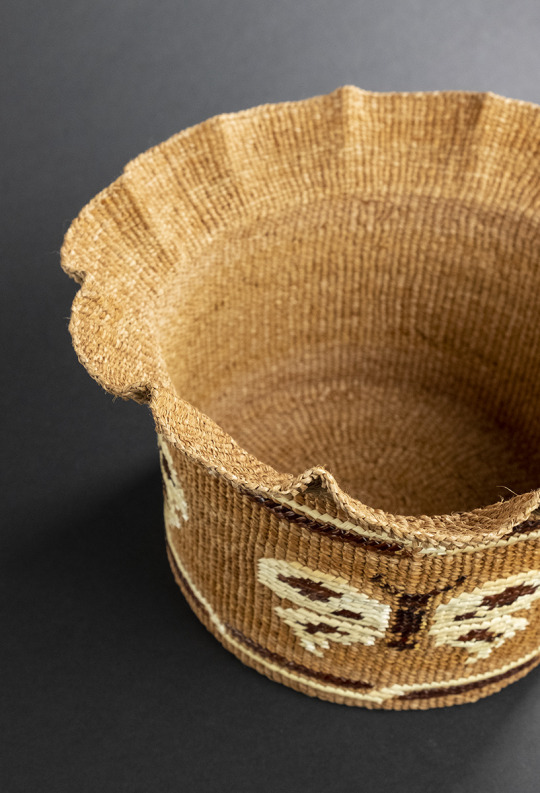
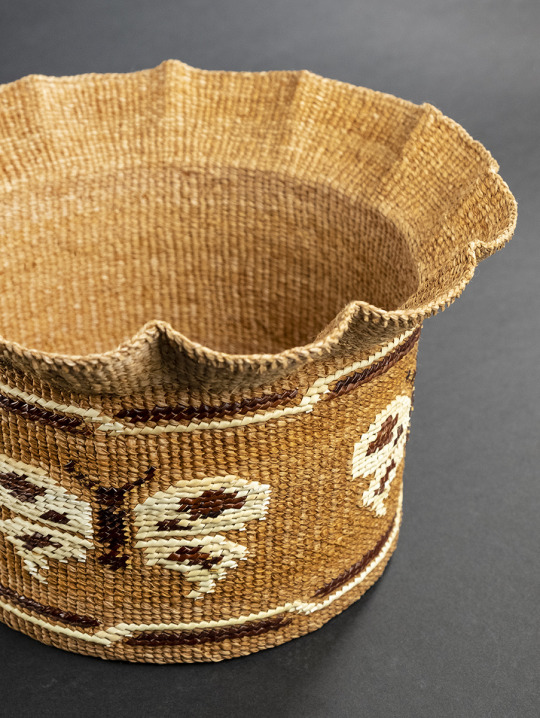
Butterfly Basket
Kandi McGilton (Ts’msyen)
red cedar bark, canary grass, maidenhair fern. 6.13” x 9.63” x 9.63”
#kandi mcgilton#ts’msyen#tsimshian#weaving#baskets#indigenous art#native art#first nations art#ndn art
47 notes
·
View notes
Text
INDIGENOUS FIRST NATIONS RESOURCES
The Anthropological Masterlist is HERE.
The First Nations people are Indigenous Canadians that are neither Inuit nor Métis.
ABENAKI ─ “The Abenaki people are an Indigenous First Nations and North American people. They are native to Quebec and the northeast United States.”
─ Abenaki Culture
─ Abenaki Language
─ Abenaki Dictionary
COWICHAN ─ “The Cowichan people are an Indigenous First Nations people. They are native to the Cowichan valley on Vancouver Island.”
─ Cowichan Information
─ Quamichan Information
CREE ─ “The Cree people are an Indigenous First Nations people. They are native to the west of Lake Superior.”
─ Cree Information
─ Cree Culture
─ Cree Language
IROQUOIS ─ “The Iroquois, or the Haudenosaunee, people are an Indigenous First Nations confederacy of people. They are native to northeastern North America.”
─ Iroquois Religion and Mythology
HAIDA ─ “The Haida people are an Indigenous First Nations people. They are native to the Haida Gwaii off the coast of British Columbia.”
─ Haida Culture
─ Haida Language
─ Haida Dictionary
MI’KMAQ ─ “The Mi’kmaq people are a First Nations people. They are native to the Northeastern Woodlands.”
─ Mi’kmaq Culture
─ Mi’kmaq History
─ Mi’kmaq Language
NOOTKA ─ “The Nuu-chah-nulth, or Nootka, people are an Indigenous First Nations people. They are native to the Pacific Northwest coast of Canada.”
─ Nootka Language
─ Nootka Language Font
─ Nootka Dictionary
NUXALK ─ “The Nuxalk, or Bellacoola, people are an Indigenous First Nations people. They are native to Bella Coola in British Columbia.”
─ Nuxalk Information
─ Nuxalk Language
─ Nuxalk Phonetics
OJIBWE ─ “The Ojibwe, or Saulteaux, people are an Indigenous First Nations people. They are native to southern Canada and parts of the Midwest United States.”
─ Ojibwe Information
─ Ojibwe Dictionary
─ Ojibwe Dictionary
SECWEPEMC ─ “The Secwépemc, or Shuswap, people are an Indigenous First Nations people. They are native to the Shuswap Country in British Columbia, Canada.”
─ Shuswap Information
─ Shuswap Language
SYILX ─ “The Syilx, or Okanagan, people are an Indigenous First Nations and North American people. They are native to Washington state and British Columbia, Canada.”
─ Okanagan Legend of the Bear Woman
─ Okanagan Legend of the Dirty Boy
─ Okanagan Language
TSIMSHIAN ─ “The Tsimshian people are an Indigenous First Nations people. They are native to coastal British Columbia and Alaska in the Pacific Northwest.”
─ Tsimshian Culture
─ Tsimshian Mythology
#resources#abenaki#cowichan#cree#iroquois#haida#mi'kmaq#nootka#nuxalk#ojibwe#secwepemc#syilx#tsimshian
81 notes
·
View notes
Text
Been playing with the Ricoh GR IIIx for a couple weeks now, and I have been using some of the film simulations from Ricoh Recipes, trying to come up with a Double-X, and have something that kinda looks like Flic Elektra 100 (Kodak Aerial) and lastly one that kinda looks Fuji 400ish.



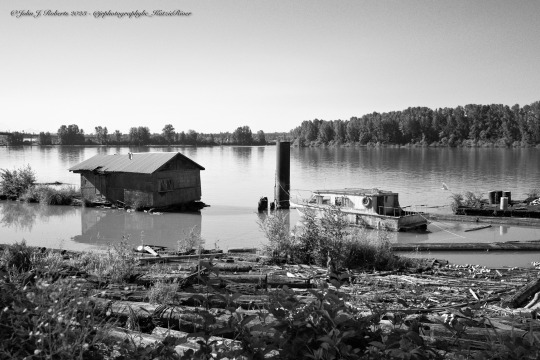
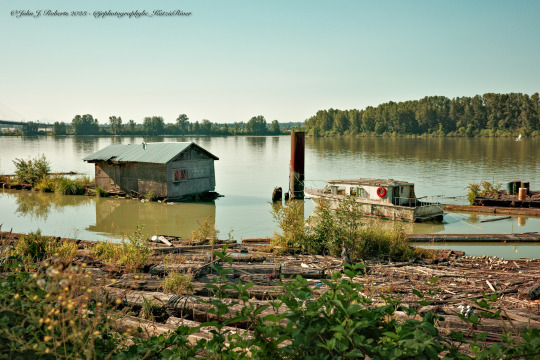

9 notes
·
View notes
Photo

Fig. 1. Yaxwiwe’, Kwakwaka’wakw frontlet, originally Tsimshian made, late nineteenth century. Maple wood, abalone shell, paint, 9 3/8 x 9 x 3 in. Seattle Art Museum 91.1.47. Photography by Kathryn Bunn-Marcuse
41 notes
·
View notes
Text
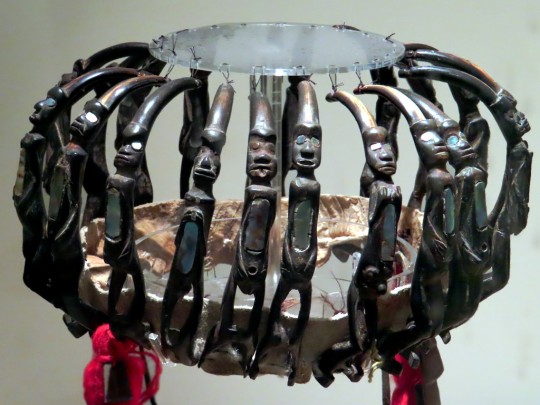
Among the artifacts at the Museum of Northern British Columbia in Prince Rupert, British Columbia, Canada, is a Tsimshian ceremonial headdress made from mountain goat horns.
4 notes
·
View notes
Text

Haida or Tsimshian Artist, Rattle, ca. 1850, maple wood and leather (Art Museum, Portland [inv. 55.256])
4 notes
·
View notes
Text
jean fucking usher manages to take a single source from like 1939 on potlatch among the Tsimshian and wilfully reinterpret it so badly that i couldn't figure out if the endnotes had somehow gotten mixed up during printing.
usher confidently says this of potlatches: "As Garfield has emphasized, many potlatches 'were given for no other reason than to give the host an opportunity to display his wealth and insult his guests in speech and song.'" (39)
so now i go to look up Viola Garfield's book on the Tsimshian, which i'm thankful the university of washington has digitized and made public. first i couldn't even find that quotation, then i realized it's in a section that's (imo) pretty clearly describing a ceremonial use of 'insults' that came along with various challenges - you get roasted if you can't finish a huge amount of food, etc. garfield's discomfort is clear in her analysis, but imo it's actually better than usher's, especially considering the additional decades' worth of time and contact with Indigenous people that usher would have to build a better analysis.
garfield describes what she's seeing, usher just takes the most damning quotation and leaves it at that.
then she goes on to talk about how the practice of potlatch helped mold the minds of Northwest coast Indigenous people to be amenable to capitalism, in the most racist train of thought available.
source: William Duncan of Metlakatla by Jean Usher, and Tsimshian Class and Society by Viola Garfield (1939). the relevant section in Garfield is around page 208.
please note: if you don't want to see further discussion of this book, please block the tag 'jean usher metlakatla'.
#jean usher metlakatla#i hate this woman so much#mine#history#indigenous history#1800s history#mid 1800s#tsimshian
3 notes
·
View notes
Text

#pacific northwest#Native America#Tsimshian#British Columbia#Canada#killer whale#National Museum of Natural History#Nagunak#Washington DC
5 notes
·
View notes
Photo
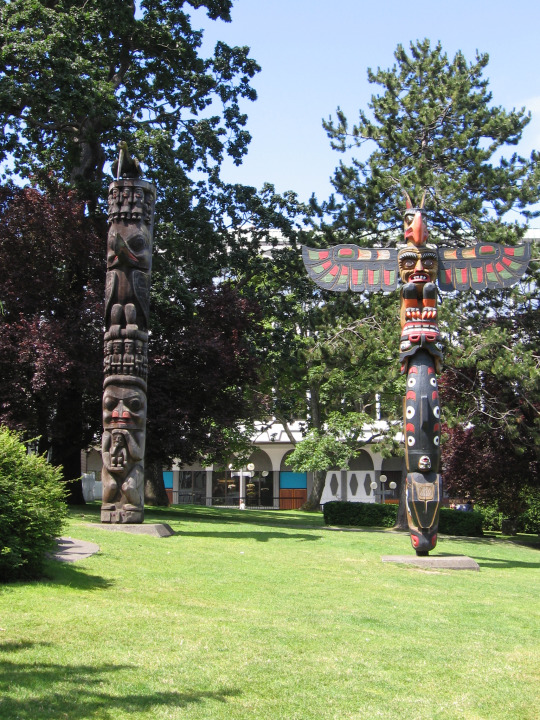
(EN) Historical item of the week⌛️
Totem Pole
Totem poles are carved wood sculptures that can be found in western Canada and western United States. Its name comes from the word odoodem which roughly translates to “ kinship group”in the indigenous Algonquian languages. The Totem poles were created by indigenous communities such as the Haida, Tlingit, Tsimshian, Kwakwaka'wakw, and Nuu-chah-nulth. Totem poles were described by French explorers from the 18th century, but developed in their complex and colorful form in the 19th century, showing complex figures from nature and mythology, being famous especially for representing the legendary Thunderbird. You can find them in various places, such as the Thunderbird Park in Victoria, British Columbia.
(ES) Objeto histórico de la semana⌛️
Pilar Totem
Seguro has visto esto en varias películas. Los pilares Tótem son esculturas talladas en madera que pueden encontrarse en la región occidental de Canadá y Estados Unidos. Su nombre viene de la palabra odoodem que más o menos traduce “clan familiar” en las lenguas indígenas algonquinas. Los Tótem fueron creados por comunidades indígenas como la Haida, Tlingit, Tsimshian, Kwakwaka'wakw y Nuu-chah-nulth. Los Tótem fueron descritos por exploradores franceses desde el siglo XVIII, pero se desarrollaron en su forma compleja y colorida desde el siglo XIX, mostrando figuras complejas de la naturaleza y la mitología, siendo famosos especialmente por representar el legendario Pájaro de trueno. Puedes encontrarlos en varios lugares, como el parque del pájaro de Trueno en Victoria, en la Columbia Británica.
#totem pole#totem#thunderbird#canada#haida#tlingit#tsimshian#kwakwaka'wakw#nuu-chah-nulth#Historical item of the week
4 notes
·
View notes
Text
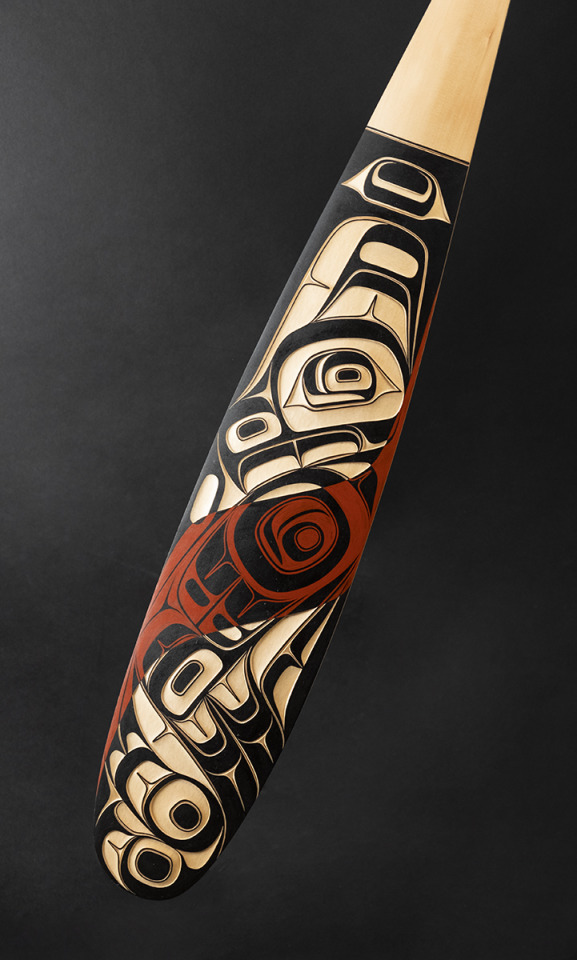



Eagle Paddle
Phil Gray
34 notes
·
View notes
Text
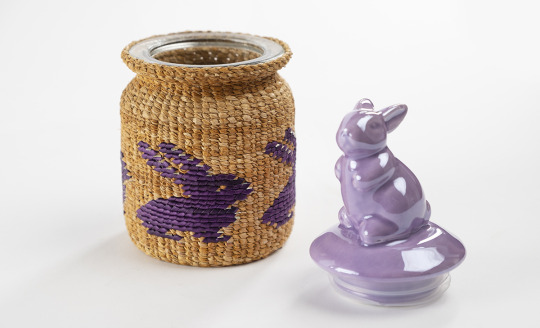


Stukwliin “Rabbit”
Kandi McGilton (Ts’msyen)
jar, woven red cedar, dyed canary grass, ceramic lid. 6.75” x 3” x 3”
24 notes
·
View notes
Text
The Tsimshian 5: Corey Moraes on Colouring in Culture and Status Signifiers (5)
Publisher: In-Sight Publishing
Publisher Founding: March 1, 2014
Web Domain: http://www.in-sightpublishing.com
Location: Fort Langley, Township of Langley, British Columbia, Canada
Journal: In-Sight: Independent Interview-Based Journal
Journal Founding: August 2, 2012
Frequency: Three (3) Times Per Year
Review Status: Non-Peer-Reviewed
Access: Electronic/Digital & Open Access
Fees: None…
View On WordPress
#Artistic Adaptation#Ceremonial Objects#Colonization#Eulachon Grease#Kwakwa̱ka̱ʼwakw#Nax&039;Nox#Potlatch#Potlatch Ban#Regalia#Seasonal Ceremonies#Secret Societies#Shamans#Symbolism#Tsimshian
0 notes
Text

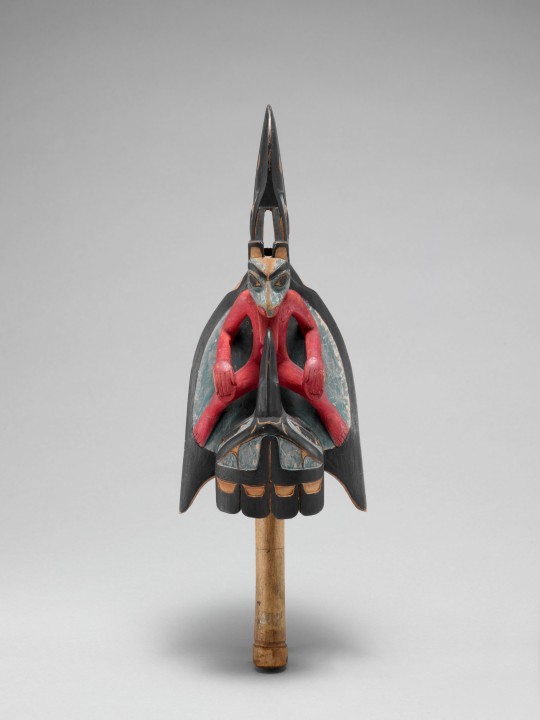

Raven rattle - Native American (Tsimshian) - 19th century
Most often associated with shamanic practices on the Northwest Coast, raven rattles are held oriented with the bird's beak pointing down when used in dance. Additionally, rattles like this are used to channel a shaman's spirit guide and can be used in healing ceremonies. Much of the symbolism associated with this rattle comments on the transmission of power from one figure to the next—the raven to humankind in general (as oral tradition states) and the kingfisher to the prone figure on the raven's back. The prone figure is personified with a face of a wolf, perhaps another guide of the owner of this rattle. Rattles are considered extremely personal objects and bear specific symbolism and power known only by those who understand their meaning. As symbols of power, rattles are also kept by clan leaders. Carved in two pieces and assembled using wooden pins to secure the halves, a rattle usually contains small stones or seeds. Polychrome adornment exhibits the pale blue pigmentation common during the late nineteenth century. It is common for raven rattles to be further adorned with feathers, fur, and beads, particularly along the seam of the two halves and at the handle base.
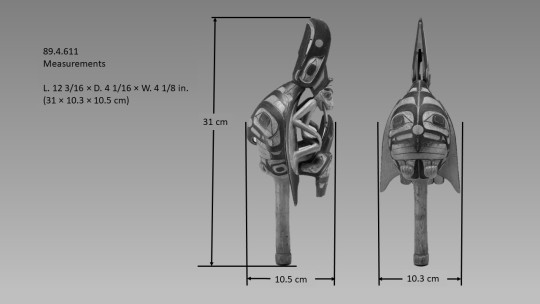
1 note
·
View note
Text

Taken a few weeks ago with a Nikon F2, Nikkor 28/2.8 AIS, using ILFORD XP2 Super
.
#NikonF2 #nikkor28mmf28 #BelieveInFilm #ShootFilmBeNice #CanadianFilmPhotographers #NorthernFilmCollective #FraserRiver #KatzieTerritory #KatzieFirstNation #FishingBoat #TsimshianPhotographer #Tsimshian #Tsmsyen #XP2Super #IlfordXP2
#believeinfilm#shootfilmbenice#staybrokeshootfilm#film#canadianfilmphotographers#analog#tsimshianphotographer#ilford#nikon f2#nikkor28f28#ilfordphoto#xp2super#ilford xp2#tsmsyen#tsimshian#katzieterritory
9 notes
·
View notes
Text
Here’s a podcast episode about our language group before COVID.
https://podcasts.apple.com/us/podcast/tsimshian-language-revitalization-with-the-juneau/id1496876900?i=1000476091840
0 notes